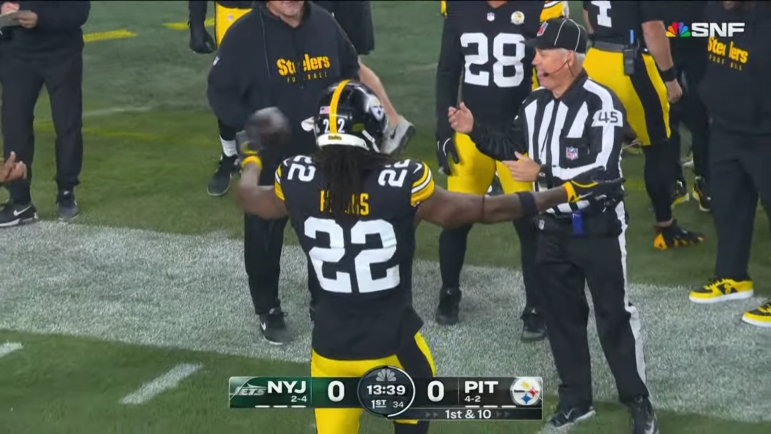There’s an old-school and new-school way to approach play-action. The old school is believing you must need a strong running game to open play-action. The new school says that’s not required and an offense just has to sell the fake, even if the running game isn’t statistically strong. It’s no surprise that Mike Tomlin is in the old-school camp, who cautions not to read much into Russell Wilson and the Steelers’ one-game success with effective play-action.
“Running game,” Tomlin said when asked why play-action worked so well against the Jets via the team’s YouTube channel. “Play-action is only effective if you got a commitment and an effective running game.”
As we pointed out yesterday, the Steelers had their most success usage of play-action against the Jets. Regardless of whose charting you use, Wilson threw for at least 150 yards and completed a high rate of play-action passes against the Jets. Those included short throws in the flats that went for long gains to TEs Pat Freiermuth and Darnell Washington and downfield throws to WRs George Pickens and Calvin Austin III.
Despite the gaudy numbers, Tomlin understands that success has as much to do with the opponent as it does themselves.
“It might just be how the New York Jets chose to play defense,” he said. “They play a lot of man-to-man. We lined up in some bunches and did some play-action passes and Calvin came free late. And so sometimes it’s not about us, to be quite honest with you, particularly if you’re just talking about a small sample size.”
It’s true the Jets played plenty of man coverage and were consistently beat by picks and rub routes. On his 36-yard catch, Austin switched his release and ran inside of George Pickens. The Jets’ DBs struggled to pass it off and Austin sprinted into open grass for an easy pitch and catch. Whether it was play-action or a traditional drop back, this play was going to hit for a big gain.
Still, the difference in how both quarterbacks carry out their play fake is clear. Wilson sells it better than Justin Fields, sucking in the defense before throwing over the top.
Whatever the reason or philosophy, the Steelers needs this success to continue. Play-action is too integral to Pittsburgh’s offense for it to be as ineffective as it was the first six weeks to the point where using it was actively harmful to a below-average offense. If Wilson can keep it rolling, the offense’s success can continue.








